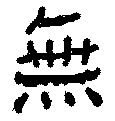|
|
Acknowledgments
Abstract
Alternative and complementary healthcare are growing ever more popular in the United States. Among the more popular alternative and complementary health care approaches being adopted by Americans are health traditions from non-Western cultures. The health traditions of China and India have in particular provided many new concepts and challenges to Western scientific medicine's approach to health maintenance and treatment. One such tradition known as qigong, from China, is quickly gaining in popularity in the United States. This practice is seen to build up bioenergy for healing and maintenance of health. Many extraordinary claims have been made for the health and treatment benefits of this practice. Research from China has documented many of these claims and research is only now beginning in the United States. In this study survey research of qigong practitioners compared to non-qigong practitioners provides interesting insights into the health benefits of this practice. In addition, ethnographic investigation provides further insights into the practices of bioenergy healers.
Table of Contents
|

